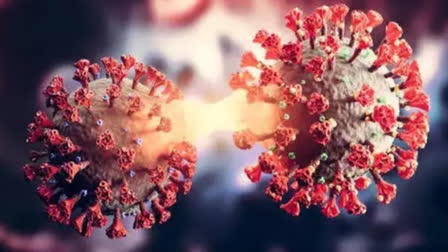New Delhi:In an alarming development, the World Health Organization has confirmed the second human case of avian influenza A(H9N2) in India with a 4-year-old child now discharged after contracting the flu, sources said on Wednesday.
The Union Health Ministry has said that a team of a public health specialist, a pediatrician, and veterinary officials from the Animal Husbandry Department and Veterinary College, and the Government of West Bengal was constituted to investigate the occurrence of influenza-like illness (ILI) in local poultry in West Bengal.
The development took place after a human case of avian influenza A(H9N2) virus infection had been confirmed in West Bengal.
The health ministry said that surveillance of ILI in humans was enhanced in the reporting district and neighboring areas.
"The District Veterinary Department enhanced surveillance of animals. The Animal Husbandry Department will share information regarding surveillance of avian influenza viruses (all subtypes under surveillance) in poultry, wild birds, etc., in the affected and adjoining areas with State Health authorities and at the central level with the Ministry of Health and Family Welfare," the Ministry said in a statement.
This is the second human infection of avian influenza A(H9N2) notified to WHO from India, with the first case reported way back in 2019.
Description of the Case
The patient is a 4-year-old child residing in West Bengal. The case, previously diagnosed with hyper reactive airway disease, initially presented to the pediatrician with fever and abdominal pain on January 26, sources said. A few days later, the child developed seizures and was brought to the same pediatrician. On February 1, the patient was admitted to the pediatric intensive care unit (ICU) of a local hospital due to the persistence of severe respiratory distress, recurrent high-grade fever, and abdominal cramps. The patient was diagnosed with post-infectious bronchiolitis caused by viral pneumonia. On February 2, the patient tested positive for influenza B and adenovirus at the Virus Research and Diagnostic Laboratory at the local government hospital. The patient was discharged from the hospital on February 28.
On March 3, with a recurrence of severe respiratory distress, he was referred to another government hospital and was admitted to the pediatric ICU and intubated. On March 5, a nasopharyngeal swab was sent to the Kolkata Virus Research and Diagnostic Laboratory and tested positive for influenza A (not sub-typed) and rhinovirus as per sources. The same sample was sent to the National Influenza Centre at the National Institute of Virology in Pune for subtyping. On April 26, the sample was sub-typed as influenza A(H9N2) through a real-time polymerase chain reaction. On May 1, the patient was discharged from the hospital with oxygen support.
